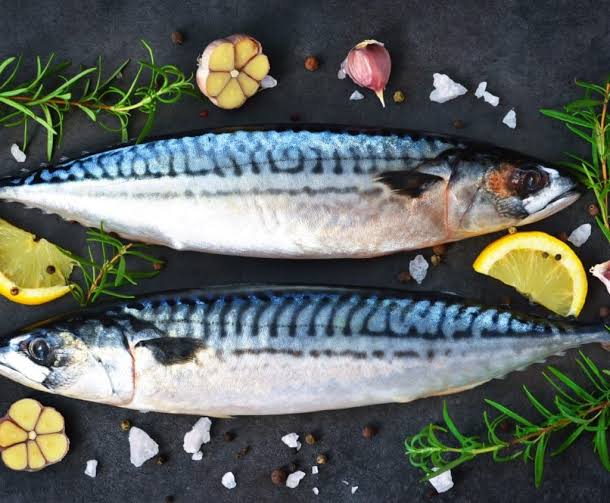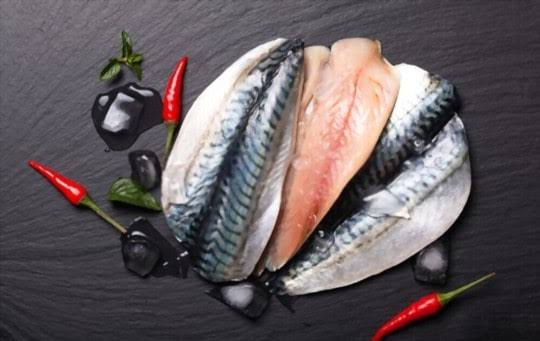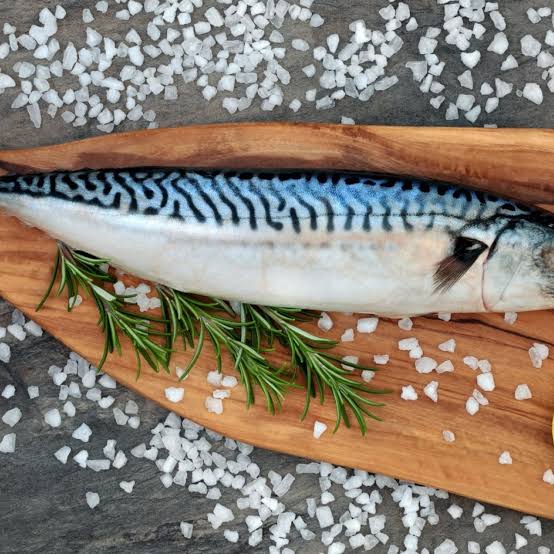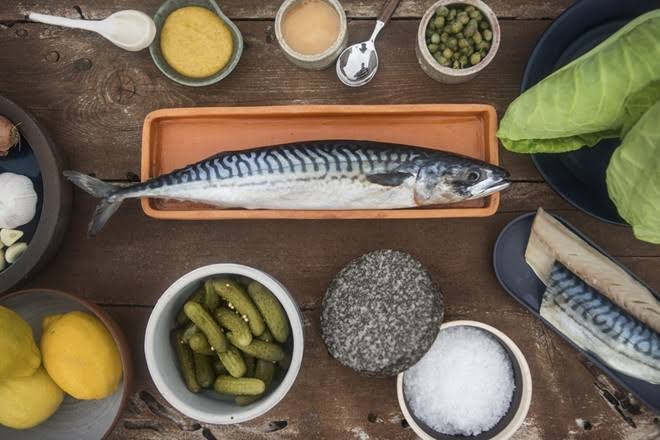Mackerel is a type of saltwater fish that belongs to the family Scombridae, which also includes tuna and bonito. There are many different species of mackerel, but the most commonly consumed varieties include Atlantic mackerel, Spanish mackerel, and Pacific mackerel.
Mackerel is a popular seafood choice due to its rich flavor and high nutritional value. It is a good source of protein, omega-3 fatty acids, vitamins B12 and D, and minerals like selenium, magnesium, and potassium.
Mackerel can be prepared in many different ways, including grilling, baking, broiling, or smoking. It is often served with a variety of sauces or marinades, and is commonly used in dishes like sushi, sashimi, ceviche, and fish tacos.
When selecting mackerel, it is important to look for fresh fish with firm flesh and a shiny skin. Mackerel can spoil quickly, so it should be stored properly and consumed within a few days of purchase.
Read Also: Proper Sowing and Planting Practices Guide
Description of Mackerel Seafood

The flesh of mackerel is firm, oily, and flavorful, with a distinctive, rich flavor that is often described as “meaty” or “robust.” The color of the flesh can range from light pink to dark red, depending on the species and where it was caught.
Mackerel is a highly nutritious seafood option, as it is rich in omega-3 fatty acids, which are essential for good health. It is also a good source of protein, vitamin B12, and vitamin D, as well as minerals like selenium, magnesium, and potassium.
Mackerel is a versatile fish that can be prepared in a variety of ways, including grilling, baking, broiling, or smoking. It is often served with sauces or marinades to enhance its flavor, and is commonly used in sushi, sashimi, and other raw fish dishes. Mackerel can also be used in salads, sandwiches, and other cooked dishes.
Health Benefits Mackerel Seafood

Good for heart health: Mackerel is rich in omega-3 fatty acids, which can help reduce inflammation and lower the risk of heart disease.
Lowers cholesterol levels: The omega-3s in mackerel can also help lower LDL (bad) cholesterol levels and raise HDL (good) cholesterol levels.
Reduces blood pressure: Mackerel contains potassium, which can help lower blood pressure and reduce the risk of heart disease.
Good for brain health: The omega-3s in mackerel may also help improve brain function and reduce the risk of cognitive decline.
Helps prevent cancer: Mackerel is rich in selenium, which has been linked to a reduced risk of certain types of cancer, including prostate, lung, and colorectal cancer.
Boosts immune function: The selenium in mackerel can also help boost immune function and protect against infections.
Helps regulate blood sugar: Mackerel is a good source of protein, which can help regulate blood sugar levels and reduce the risk of type 2 diabetes.
Supports healthy bones: Mackerel is rich in vitamin D, which is important for healthy bones and may help reduce the risk of osteoporosis.
Good for skin health: The omega-3s in mackerel may help improve skin health and reduce the risk of skin conditions like psoriasis.
Reduces inflammation: Mackerel is a good source of anti-inflammatory nutrients, including omega-3s and vitamin E, which can help reduce inflammation in the body.
Improves digestion: Mackerel is a good source of vitamin B12, which is important for healthy digestion and may help reduce the risk of digestive disorders like inflammatory bowel disease.
Boosts energy: Mackerel is a good source of iron, which is important for healthy energy levels and may help prevent fatigue.
Supports healthy vision: Mackerel is rich in vitamin A, which is important for healthy vision and may help reduce the risk of age-related macular degeneration.
Reduces the risk of stroke: The omega-3s in mackerel may help reduce the risk of stroke by improving blood flow and reducing inflammation.
Helps maintain healthy muscles: Mackerel is a good source of protein, which is important for building and maintaining healthy muscles.
Good for dental health: Mackerel is rich in calcium, which is important for healthy teeth and may help reduce the risk of tooth decay.
Helps reduce stress: Mackerel is a good source of magnesium, which can help reduce stress and improve sleep quality.
Good for hair health: The omega-3s in mackerel may help improve hair health and reduce the risk of hair loss.
Supports healthy pregnancy: Mackerel is a good source of folate, which is important for healthy fetal development and may help reduce the risk of birth defects.
Helps maintain healthy weight: Mackerel is a good source of protein, which can help promote satiety and reduce the risk of overeating, making it a good food choice for weight management.
Uses of Mackerel Seafood

Grilled or baked: Mackerel can be grilled or baked with a variety of seasonings and sauces to create a delicious main dish.
Smoked: Smoked mackerel is a popular delicacy, with a rich and smoky flavor that pairs well with salads, sandwiches, and other dishes.
Canned: Canned mackerel is a convenient and affordable option for adding protein to meals, and can be used in salads, sandwiches, and pasta dishes.
Sushi and sashimi: Mackerel is a common ingredient in sushi and sashimi, where it is often served raw with soy sauce and wasabi.
Fish cakes: Mackerel can be mixed with potatoes and other ingredients to make flavorful and nutritious fish cakes.
Tacos: Mackerel is a popular filling for fish tacos, where it is often grilled or fried and served with toppings like salsa and avocado.
Salads: Mackerel can be added to salads for a boost of protein and omega-3s, and pairs well with greens like arugula and spinach.
Ceviche: Mackerel is a popular ingredient in ceviche, a Latin American dish made with raw fish marinated in citrus juice and spices.
Sandwiches: Mackerel can be used in sandwiches for a healthy and flavorful alternative to processed meats like ham and turkey.
Soups and stews: Mackerel can be used in soups and stews to add flavor and nutrition, and pairs well with vegetables like potatoes and carrots.
In addition, mackerel is a versatile and nutritious seafood that can be used in a variety of dishes to add flavor, protein, and omega-3s to meals.
Read Also: Recommended Broiler Vaccination Schedule
Processing and Preserving Mackerel

Cleaning and preparing the fish: Before processing and preserving mackerel, it’s important to clean and prepare the fish properly. Remove the head, tail, and internal organs, and rinse the fish thoroughly under cold water.
Smoking: Smoking is a popular way to preserve mackerel. You can use a traditional smoker or a stovetop smoker to smoke the fish. Rub the fish with salt and leave it in the fridge for a few hours to marinate. Then, smoke the fish until it’s cooked through.
Pickling: Pickling is another popular way to preserve mackerel. You can pickle the fish in vinegar, salt, and sugar, along with herbs and spices. Once pickled, store the fish in a jar in the fridge.
Canning: Canning is a great way to preserve mackerel for long-term storage. You can can mackerel in oil, water, or a tomato-based sauce. Before canning, cook the fish until it’s almost fully cooked. Then, pack the fish into jars, add your preferred liquid, and process the jars in a pressure canner.
Freezing: You can also freeze mackerel to preserve it. Place the cleaned and prepared fish in a freezer bag or airtight container, and store it in the freezer for up to six months.
No matter which method you choose, it’s important to handle the fish carefully and store it properly to ensure that it stays fresh and safe to eat.
Read Also: How to Treat a Viral Fever at Home
